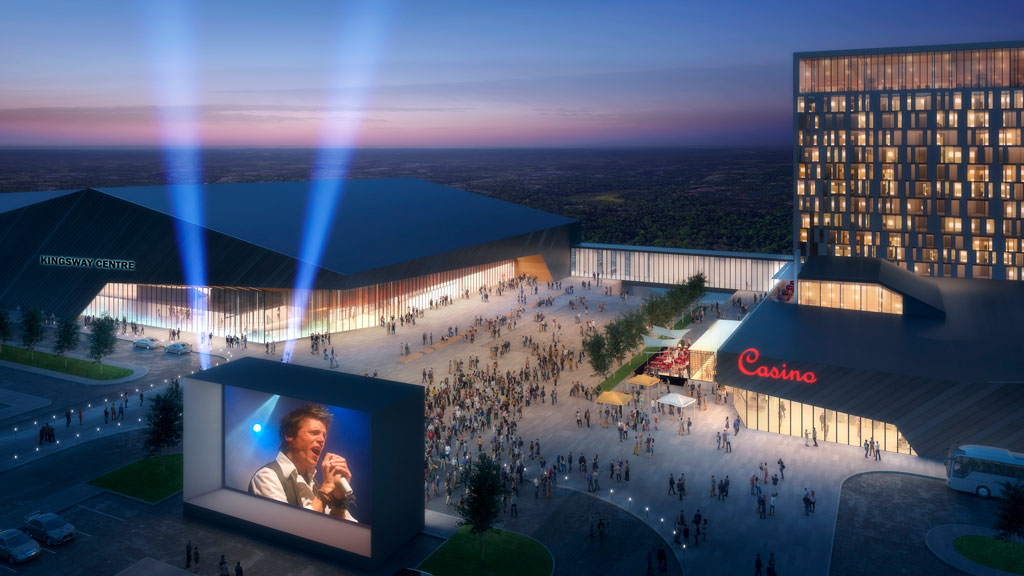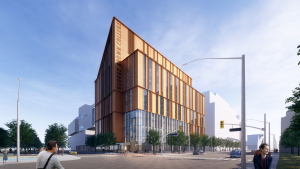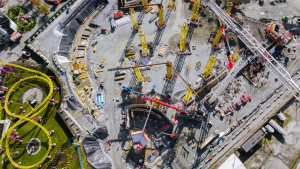Inflation, supply chain uncertainties and labour shortages are factors in the City of Greater Sudbury’s decision to revise an RFP for its largest project-ever, a $100 million events centre at the heart of the proposed Kingsway Entertainment District (KED).
The shift from a traditional design-build to a progressive design-build (PDB) package aims to reduce risk for both the city and the private developer/builder on the project expected to start this fall.
PDB is relatively new in Canada and is associated with “much larger, complex projects” under the umbrella of agencies such as Infrastructure Ontario, says David Shelsted, project director for the city.
But he believes the novel design-build process for the 6,500-seat event centre “represents the best value for the community.”
Shelsted says with a traditional design-build model, each proponent first submits a design to around the 30 per cent level of the project’s cost. That is a substantial upfront price.
Under the PDB each bidder gets a $150,000 honorarium from the city for a conceptual design to submit to the city.KED
The winning proponent (builder, architect and engineers) can then proceed to detailed design development with the city where decisions can be made on design modifications prior to negotiating the contract.
Shelsted says the stepped process eliminates risks for both the city and the development/design team.
City Councillor Robert Kirwan is confident that under the PDB the “politically charged project” will come in at an acceptable price to the city.
Kirwan sees the honorarium as money well spent because it should cover most expenses for a preliminary design, giving the three pre-qualified proponents incentive to prepare “competitive (conceptual design) bids to satisfy pretty much of what we want.”
The three teams shortlisted for the project are EllisDon, PCL and TESC/Ball Construction.
The new model closely aligns with a “design-bid-build method,” Shelsted says, pointing out that through a stepped process design unknowns are ironed out, helping to keep the project within budget.
Kirwan adds: “Rather than have a company (bidder) come in and spend all this time doing what they think the city is going to want, they can say, ‘Based on the RFP this is what we can do, this meets this cost…and we can deliver the final product at that cost.’ If you want more green energy, if you want net-zero or three-inch pads on the seats instead of an inch-and-a-half you can do it but now it becomes the responsibility of the owner, the city to add those in.”
The events centre is the first stage of development on the site which could also see a casino, large hotel chain and associated projects.
The city’s original proposal for the KED project in 2017, a traditional bid-design, had an “affordable ceiling cap” of $92 million but after meetings with legal advisers, the proponents and industry advisers, the city identified numerous risks, including supply chain uncertainties, inflation and labour shortages over the 24-month construction span, says Shelsted.
Under the traditional model, if the contractor makes claims for price hikes beyond its control it could result in “difficult negotiations during construction that might cause delays,” he points out.
Another fault is that proponents could include the price for risk in their bid, a risk that might not materialize.
“We could end up paying more for a lessor building.
“A benefit to the PDB is that it moves the project closer to a construction start, allowing the builder to fine tune agreements with suppliers and scheduling with subs,” adds the project director.
Shelsted says this summer a team will be selected for the project. Budget approvals by city council for design and construction will follow.
“There is potential for the owner and the design-builder to split up along the way if it gets too costly or we can’t come to agreement.”
The city is confident it will win current legal challenges to the project in time for a start to site work that includes rock blasting by this fall. Building construction would follow in the spring of 2023, depending on completion of the design and the weather.
To date, Shelsted says the majority of comments from the public and city councillors have been favourable to the new design-bid process.











Recent Comments